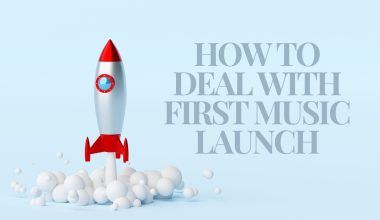SoundCloud has become one of the most popular platforms for sharing and discovering music. But have you ever wondered, “When was SoundCloud made?” If you have, you’re not alone. This incredible platform has a fascinating story, and its journey is worth exploring.
The Beginning of SoundCloud
The story of SoundCloud began in 2007. It was the brainchild of two friends, Alexander Ljung and Eric Wahlforss, who were passionate about music and technology. Based in Stockholm, Sweden, they envisioned a platform where musicians could share their work easily and connect with audiences worldwide. This vision soon took shape, and SoundCloud was officially launched in August 2007.
Before SoundCloud existed, musicians faced challenges in sharing their work online. Platforms like MySpace were around, but they weren’t specifically designed for music creators. Ljung and Wahlforss wanted to create a space where music came first, and creators could showcase their talent without limitations. Their goal was simple: empower artists and change how music is shared and consumed.
Why Was SoundCloud Created?
When SoundCloud was made, it wasn’t just another tech startup. It was a solution to a growing problem in the music industry. Musicians were struggling to find ways to distribute their music online without relying on record labels. The duo realized this gap and decided to bridge it by creating SoundCloud.
Their idea was unique. Unlike other platforms at the time, SoundCloud allowed creators to upload, share, and distribute audio files with minimal effort. This innovation made it a game-changer for independent musicians and even larger artists looking for new ways to connect with their fans.
Early Days and Growth
When SoundCloud was first introduced, it gained traction quickly. By 2008, just a year after its launch, it had already established a loyal user base. Musicians loved the ease of uploading tracks, and listeners appreciated the vast library of music they could explore for free.
The platform’s growth wasn’t accidental. SoundCloud’s creators were constantly innovating and improving the user experience. They introduced features like waveform visualizations, which allowed listeners to see the audio’s peaks and troughs, making the platform more interactive. This feature became a signature element of SoundCloud and set it apart from competitors.
Moving to Berlin
As SoundCloud grew, it became clear that it needed a new home. In 2008, Ljung and Wahlforss decided to move the company to Berlin, Germany. Berlin was a hub for creativity and tech innovation, making it the perfect place for SoundCloud to thrive.
This move marked a turning point in the platform’s journey. Being in Berlin gave SoundCloud access to a larger talent pool and a more vibrant music scene. It also helped the company attract investors, which was crucial for its expansion.
The Role of Community
One of the reasons SoundCloud has been so successful is its focus on community. From the beginning, the platform emphasized building a strong connection between creators and listeners. This approach helped foster a sense of belonging among users, which played a significant role in its growth.
When SoundCloud was made, Ljung and Wahlforss wanted to create more than just a music-sharing platform. They aimed to build a space where artists could receive feedback, collaborate with others, and grow their fanbase. Features like comments on waveforms allowed listeners to engage directly with specific parts of a track, making the experience more personal and interactive.
Challenges Along the Way
Like any startup, SoundCloud faced its share of challenges. In its early years, the platform struggled to monetize effectively. While it was gaining millions of users, turning that popularity into profit was a different story.
In 2014, SoundCloud introduced SoundCloud Go, a subscription-based service. This move aimed to generate revenue and compete with other streaming giants like Spotify and Apple Music. Although it helped, the company still faced financial hurdles, leading to rumors of bankruptcy in 2017. However, with strategic investments and a renewed focus on its core community, SoundCloud managed to bounce back.
The Impact of SoundCloud
When SoundCloud was made, it disrupted the music industry in ways few could have imagined. It democratized music sharing, giving independent artists a platform to showcase their work without relying on record labels or traditional distribution channels.
The platform also played a significant role in launching the careers of many artists. Musicians like Billie Eilish, Chance the Rapper, and Post Malone all gained early recognition on SoundCloud. This ability to discover and nurture talent has cemented its place in the music world.
Innovations and Features
Over the years, SoundCloud has continued to innovate. It introduced features like SoundCloud Premier, which allows creators to monetize their tracks. The platform also added analytics tools, giving artists insights into their audience and performance.
SoundCloud’s commitment to staying ahead of the curve has helped it remain relevant in a highly competitive market. Whether through partnerships with major labels or introducing new monetization options, it’s clear that the platform is here to stay.
Looking Ahead
As SoundCloud moves forward, its focus remains on empowering creators and connecting them with their audience. The platform’s journey from a small startup in Stockholm to a global music-sharing powerhouse is nothing short of inspiring.
So, the next time you’re enjoying a track on Sound Cloud, take a moment to appreciate the platform’s history. From its humble beginnings in 2007 to its role as a leader in the music industry, Sound Cloud has truly changed the way we experience music.
For further reading, explore these related articles:
For additional resources on music marketing and distribution, visit DMT Records Private Limited.






